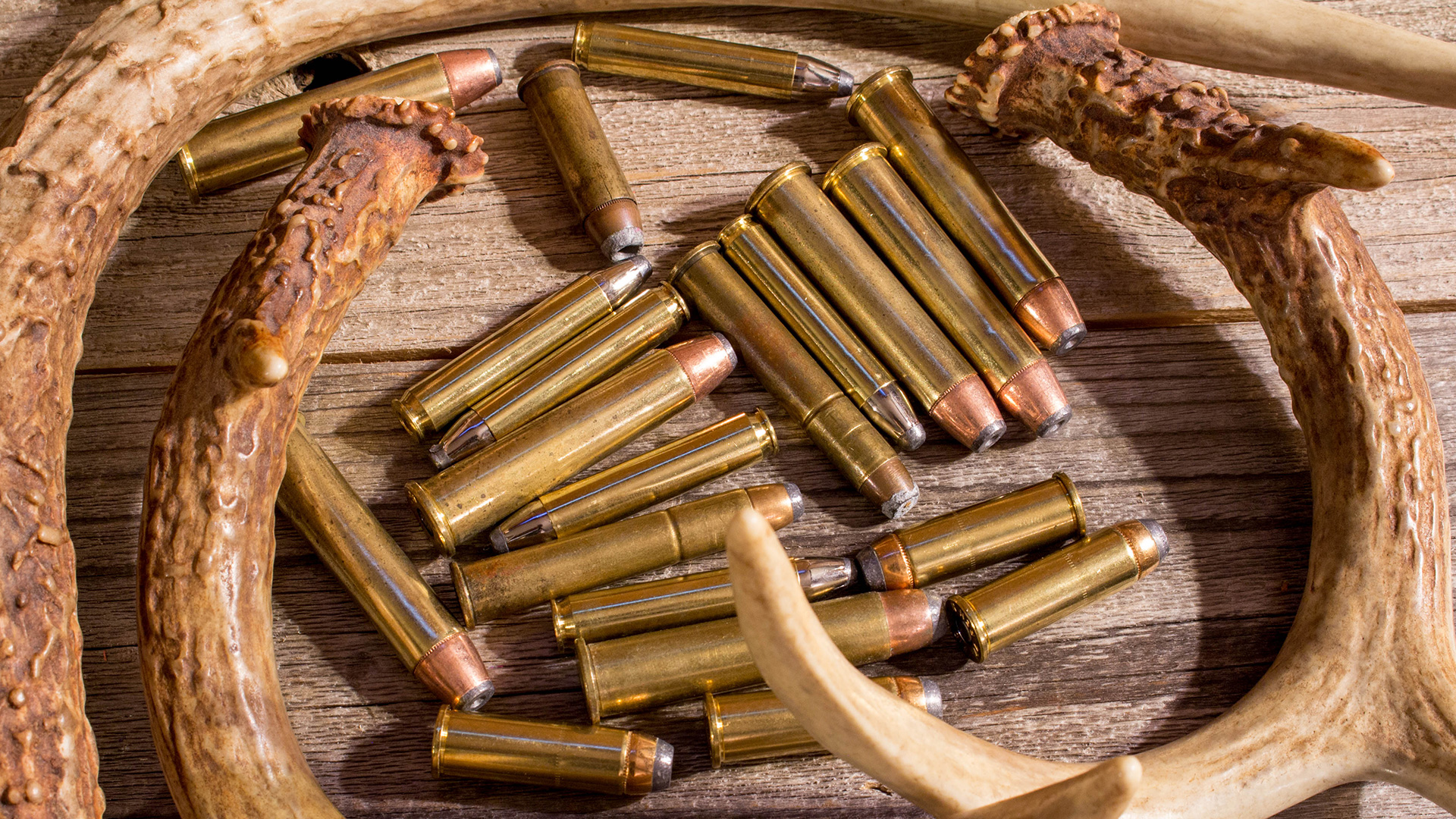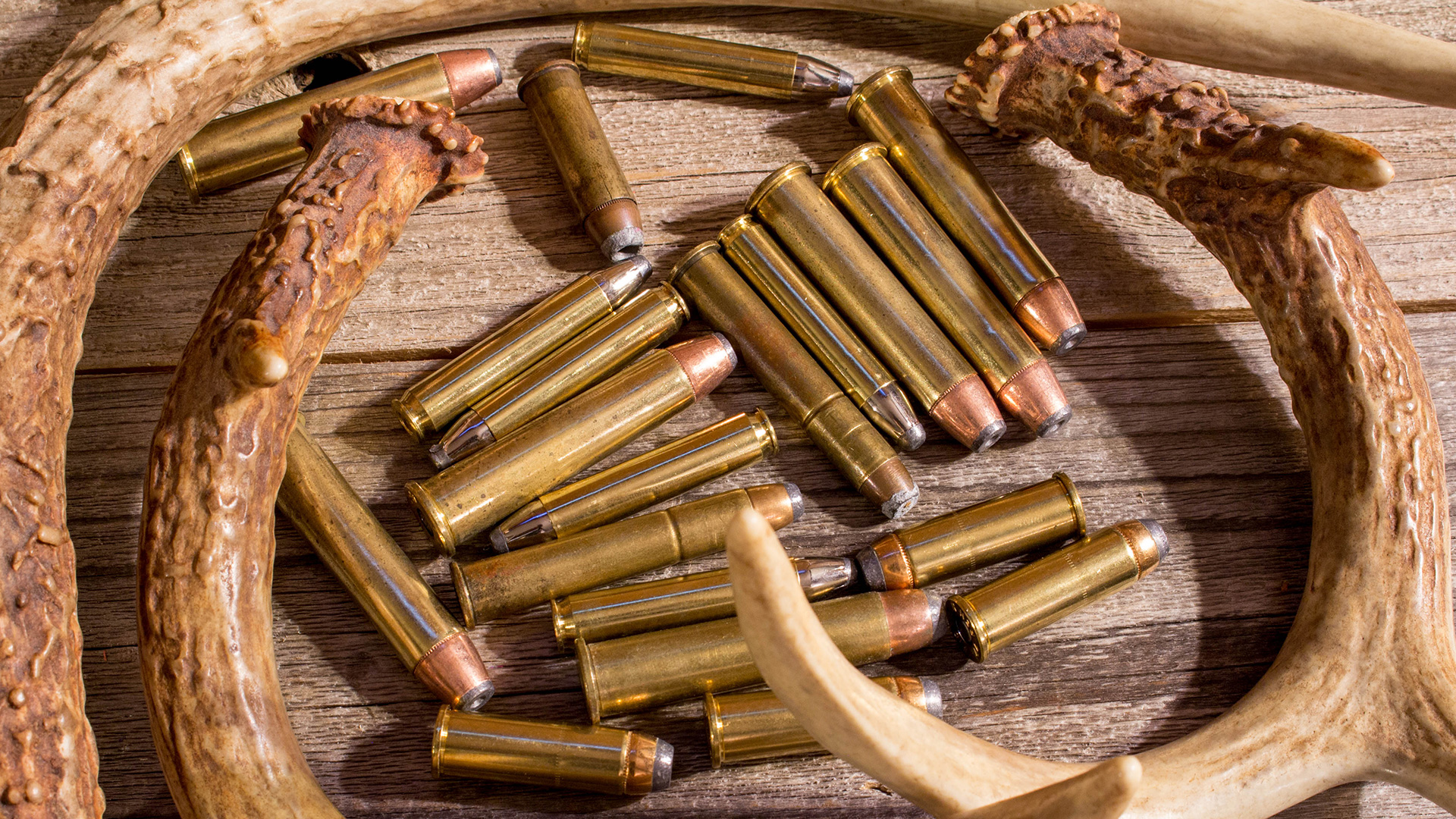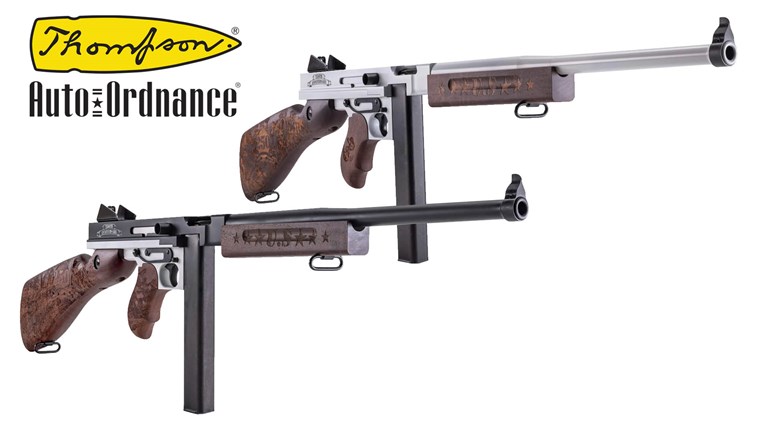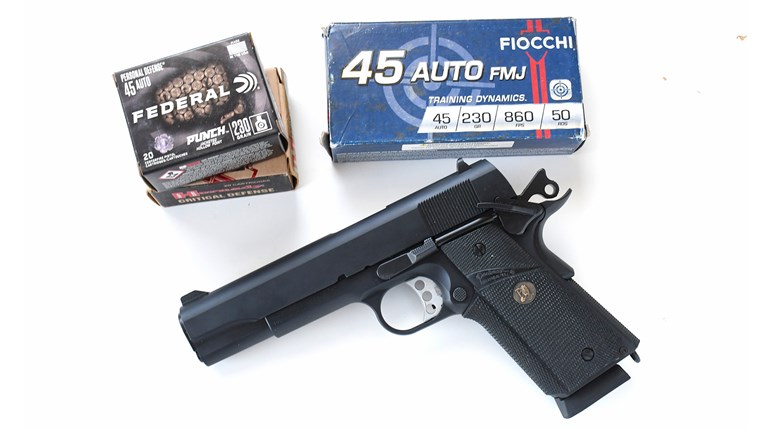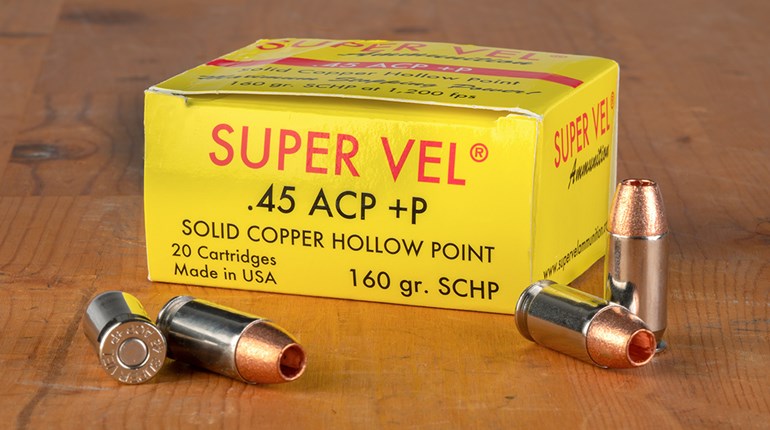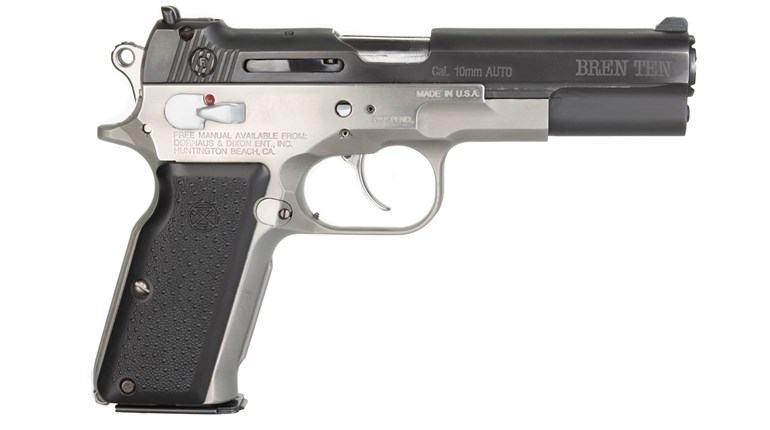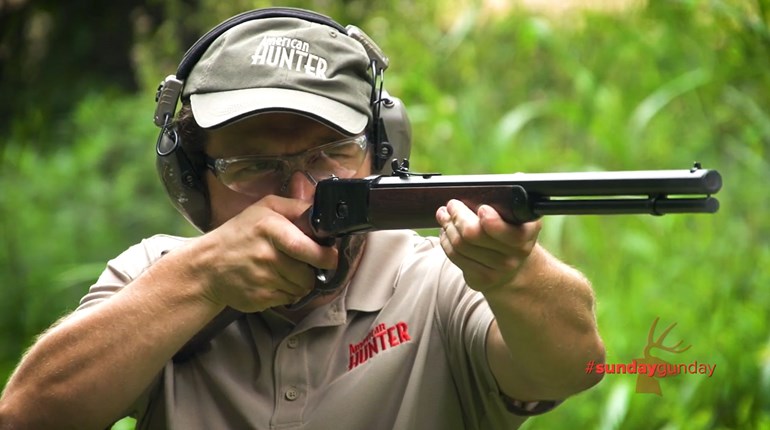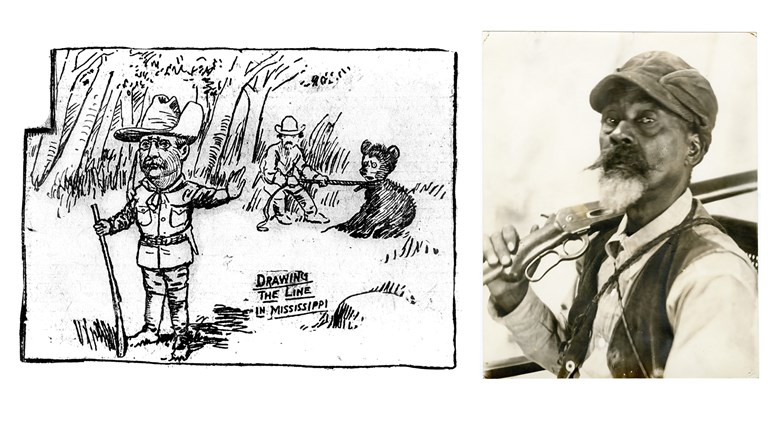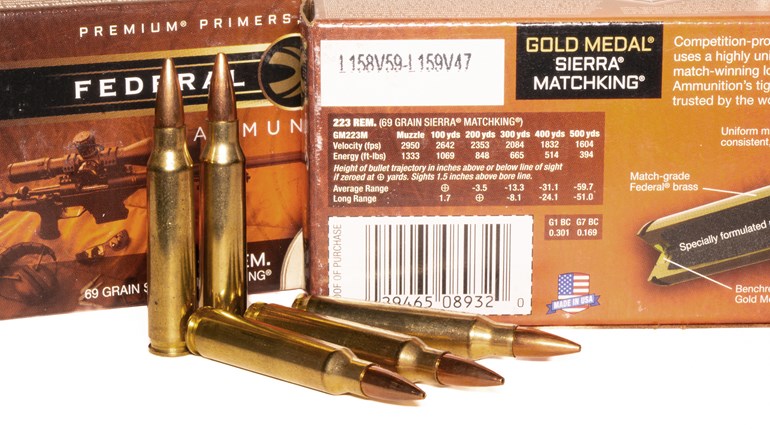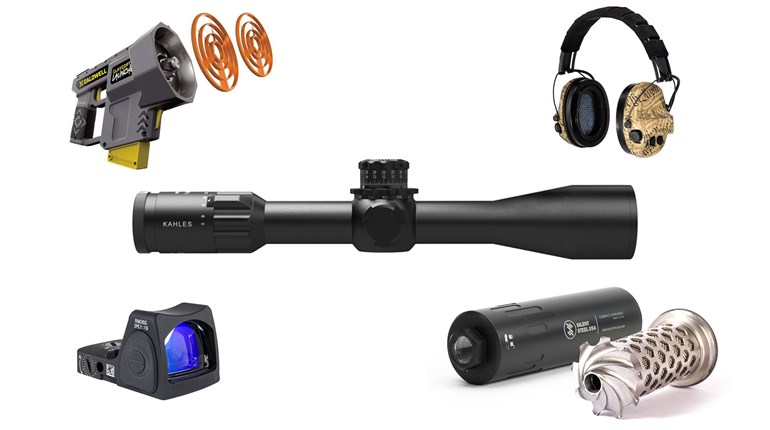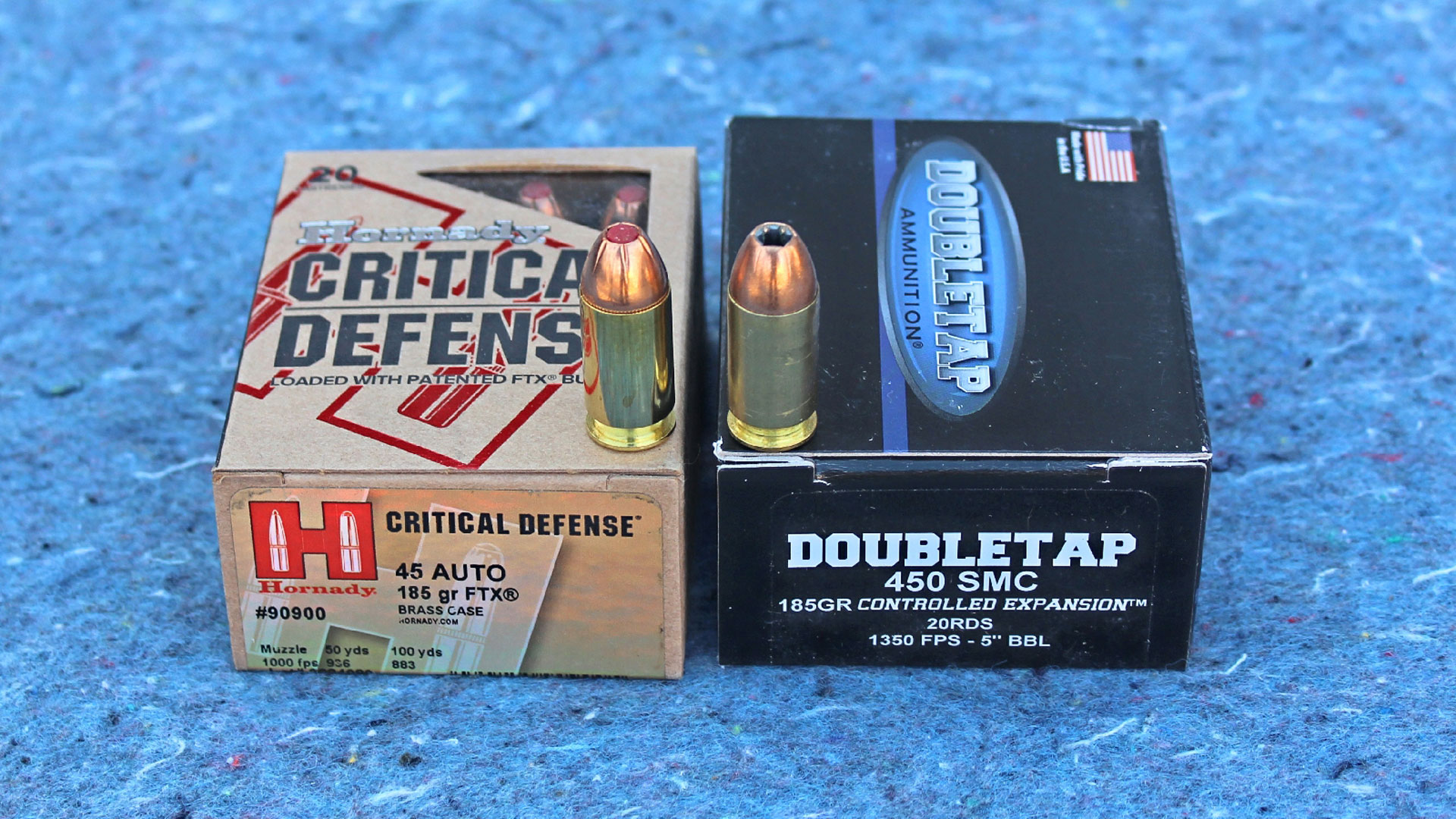
Among the best-known and longest-serving military and civilian defensive pistol calibers in the United States is the .45 ACP. Many enthusiasts still praise this member of John Moses Browning's Automatic Colt Pistol (ACP) cartridge family, which was developed in 1905. It was eventually paired with Browning's 1911A1 semi-automatic pistol to form one of the most successful gun and ammunition combinations in this country's shooting-sports history.
But when it comes to more recent online conversations regarding defensive handguns for use on the trail, the .45 ACP often gets short shrift. Polymer-framed 10mm Auto pistols are taking up more holster space in bear country these days. So much so, that even long-time trail-gun favorites, including double-action revolvers chambered in .357 Magnum and .44 Magnum, are taking a back seat.
But despite the 10mm Auto's popularity, I was not quite ready to write off the .45 ACP cartridge, and the many popular pistols chambered in it, as trail gun options just yet. Recently I found myself in possession of a pair of Taurus TH series pistols, one chambered in .45 ACP and the other in 10mm Auto. I did my best to line up comparable loads in both calibers and shot them side-by-side to compare the performance numbers. But it came as no surprise that even when using +P-rated .45 ACP ammunition, the 10mm was the superior performer.
Simply stated, the 10mm Auto can hit harder than a .45 ACP. This is due in no small part to differences in cartridge case pressure tolerance levels. Remember, the 10mm Auto, as envisioned by Colonel Jeff Cooper, was developed to stretch the 1911 pistol's effective range out to 50-yards. This was done by launching .40-caliber bullets from cartridges operating at a maximum average pressure (MAP) of 37,500 psi. Standard pressure .45 ACP ammunition operates at a maximum of 21,000 psi with the +P loads topping out at 23,000 psi. No matter how you slice it, the 10mm Auto cartridge has the bullet energy potential edge for semi-automatic pistols. Or does it?

The .450 SMC Cartridge: A Bit of Background
Efforts to develop a more powerful, but still .45 ACP-compatible, pistol cartridge can be traced back to the mid 1980s. Gun writer Dean Grennell took the .451 Detonics Magnum cartridge case (which in turn is based on the .45 Winchester Magnum case) and trimmed the length down to match that of the .45 ACP. Operating at up to 28,000 psi, early loads were capable of launching 185-grain bullets at 1,300 fps. which represented an impressive boost in performance. Working in conjunction with Ace Hindman of Ace Custom 45s, the .45 Super cartridge was born.
Unfortunately, the .45 Super would become encumbered by an unusual business choice made by the late Ace Hindman's son, Garey Hindman. He trademarked the cartridge name “.45 Super.” This meant that any cartridge case, ammunition or firearm manufacturer who stamped .45 Super on their products would have to pay royalties to Hindman. Even though he kept the offering alive, none of the big players in the industry would promote the cartridge which, in turn, resulted in no reliable source for .45 Super brass.
In 1994 the owner of Triton Cartridge, Fernando Coelho, reached out to Garey Hindman to offer his services on behalf of the .45 Super. However, Coelho ran into issues which inspired him to develop his own potent .45 ACP pistol-compatible cartridge starting in 2001. It was dubbed the .450 SMC (Short Magnum Cartridge) so as to not be bound by the .45 Super trademark. Coelho would also modify his cartridge to use a small rifle primer in place of a large pistol primer. This solved the problem of primer flow (the primer flattening out when fired) and made room for additional metal to reinforce the cartridge base.
Triton Cartridge soon began shipping factory-made .450 SMC rounds loaded to 32,000 psi. Although this is not as high of a pressure potential as the 10 mm Auto (37,500 psi), it launches larger bullets. This levels the playing field, especially when compared to standard .45 ACP, .45 ACP +P and .45 Super bullet energy levels. But the .450 SMC would run into some setbacks of its own.

In 2003, Triton Cartridge went out of business. As a result, it looked like this souped-up .45-caliber pistol round was going to slip into obscurity along with it. However, Mike McNett, founder of DoubleTap Ammunition, would swoop in to save the day. In business since 2002, McNett had launched DoubleTap by offering full-power 10mm Auto loads not available from other manufacturers at that time. Recognizing the .450 SMC's potential, he purchased the rights and tooling to the cartridge and spent a few years tweaking it to get it just right before adding it to the company's now expansive catalog of pistol and rifle calibers.

Today DoubleTap offers six different loads topped with bullet weighing between 160-grains to 255-grains, with bullet styles including jacketed hollow points, full-metal jacket and hard-cast lead flat nose. Although DoubleTap has offered .450 SMC for some time, it has yet to be officially recognized by the Sporting Arms and Ammunition Manufacturers' Institute (SAAMI), and thus remains a wildcat cartridge. This 'unofficial' cartridge status, along with the lack of pistols built specifically for this round, keeps the .450 SMC flying relatively low on the trail-gun caliber scene.

The AIM Surplus Glock G21 SF Project Gun
The primary reason I wanted to pursue this evaluation of the .450 SMC is to provide .45 ACP fans with an alternative to setting aside a favorite pistol and purchasing a gun chambered in 10mm Auto to take its place. Over the years, I've found that making a few changes to a gun one already owns can be a far more frugal proposition than buying a new gun and all that it entails.
In this case, I had a law enforcement trade-in Glock Gen3 G21 SF .45 ACP on hand that was found for sale on the AIM Surplus website. As of this writing, they are listed for $399.95 and ship with one 13-round magazine. The Gen3 Short Frame (SF) models were the company's attempt to reduce the size of the big-bore pistol grips ahead of the interchangeable backstraps introduced with the Gen 4 models. I originally ordered this G21 to use as a base gun for a 10mm Auto caliber conversion. However, the .450 SMC popped up on my radar and I opted to work with it first and save the 10mm conversion for another day.
DoubleTap maintains in their literature that the .450 SMC cartridge can be safely fired in any .45 ACP pistol, revolver or carbine which is rated for .45 ACP +P ammunition, no modifications required. Although this statement is technically correct, it's also incomplete. If you spend any time researching the .45 Super or similar cartridges, the one thing that gets mentioned time and again is the benefit of using a heavier recoil spring weight.

Glock pistols are rated for +P ammunition and the Gen 3 Glock G21 ships with a factory standard recoil spring weight of 17-pounds. However, this spring is intended to cycle the pistol reliably with a full range of .45 ACP ammunition from the lightest standard pressure rounds all the way up to the most potent +P loads. But the jump up in pressure from .45 ACP +P to .450 SMC is a significant one. Folks in the know recommend at least a 20-pound recoil spring for a 1911 platform and no less than a 21-pound spring for Glocks. Along the way I found thumbs-up on-line comments for 22-, 23- and 24-pound springs as well, but there was little agreement as to which weight is the best option.

With this in mind, I prepared to shoot the trade-in G21 by checking in with the good folks over at Lone Wolf Arms. I requested a pair of compatible captured spring stainless steel guide rods (LWD-GR2021; $20.95) along with ISM full-size flat wire recoil springs ($8.99) weighing 20, 22 and 24 lbs. The rods were outfitted at home with the 22- and 24-pound springs, with the 20-pounder held in reserve if needed.

Even though this pistol was perfectly serviceable as-is, I went ahead and installed a few more upgrades that I wanted to test drive. The old, defunct night sights were traded out for a top-notch set of XS Sights R3D 2.0 sound-suppressor-and-RMR-optic-height night sights with the orange ring around the front sight's Tritium lamp (GL-R205P-6N; $148.49). The in-house bullet velocities for the .450 SMC ammunition are listed as having been fired using a 5-inch barrel. That’s the reason I traded out the Glock's standard 4.62-inch barrel for the Lone Wolf 5-inch-long threaded stainless steel barrel previously mentioned in this review.

Ghost Inc. offers a handy selection of 'bullet' shaped Glock pistol slide stop lever upgrades. Customers can choose from rounded extensions positioned forward, central to or further back from the factory lever's location on the pistol frame. With my somewhat smaller hands, the further back configuration was an ideal fit.
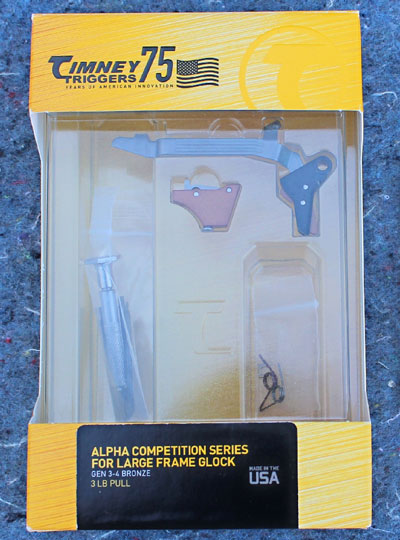
The gun I received exhibited an abysmal 8-pound 5-ounce trigger pull. This was due to the installation of a heavier connector as mandated by some police department regulations. I opted to swap out the entire assembly in order to work with Timney Triggers' excellent Alpha Competition trigger groups for Glock Gen 3 and 4 large-frame models ($149.99). The straight-faced aluminum trigger features an anodized blade safety in different colors, including the bronze version shown here. The sear and trigger bar are treated with a Teflon nickel coating for smooth operation. The trigger pull weight is listed at 3-pounds. In this case the tested trigger pull was 3-pounds 3-ounces. You'll get no complaints from me! Whether or not this light of a trigger is a good fit for a trail gun is up to you to decide. But considering how many quality 1911s have triggers tuned to similar pull weights, it's not out of line for those more experienced pistol shooters who are familiar with them.

Completing this pistol's trail-to-town accessory set is a Muddy River Tactical inside-the-waistband Kydex holster and magazine pouch featuring this company's Southwest BOHO specialty print finish. The holster and pouch are both outfitted with standard belt clips but the holster has been upgraded with an optional, and removable, claw attachment. The holsters in this series ship optics ready, the belt clip can be adjusted to a forward cant and the open base accommodates extended threaded barrels like the one used in this evaluation. This holster also proved to be compatible with the Ghost, Inc. magazine release. As shown here, this set has a suggested retail price of $108.94.

Range Results
At the shooting range, I was pleased to see the retired G21 SF with its modifications and five Glock factory 13-round magazines work its way through the DoubleTap .450 SMC ammunition reliably. The only malfunction throughout the course of testing was a single failure to feed due to my mistake (I'll explain in a moment). The 24-pound recoil assembly was installed at the start with the 22-pound assembly on hand if there were any feeding issues. There were none, so the 24-pound spring was used for the entire run.
The five load test set consisted of three hollow points and two non-expanding, deep penetrator loads. I started with the all-copper 160-grain hollow point. With the heavier spring installed, felt recoil was moderate, much like standard .45 ACP ammunition. I relaxed into it and enjoyed the trigger time, but it turns out this load was traveling an average of 143-fps. slower than it was listed. When it was time to switch to the 185-grain bonded hollow points, I expected the increase in recoil to be incremental. It was not. The recoil jumped from moderate to stout and yes, yours truly limp-wristed the shot a bit and jammed up the action. Knowing now what was in store, I tightened up my grip to the appropriate level and the gun cycled flawlessly from then on. In this case, the average velocity was spot on with that listed on the box.

Bench-rested accuracy testing was conducted at 25-yards by firing three, 3-shot groups into paper targets. Bullet velocities were measured using a LabRadar LX chronograph. Here are the complete test results:

The levels of felt recoil with the 230-grain hollow point, 230-grain full-metal jacket flat point and the 255-grain hard cast loads were stout, which was no surprise considering that the bullet velocity averages for all three were higher than those listed on the boxes. And for those who are wondering about the 255-grain round shooting notably faster than listed, I went through the shot string data on the chronograph and found it to be consistent. I had no reason to doubt the results and so they are included here. At the end of the day, the G21 would have been exciting, but manageable, to shoot with a lighter recoil spring. That being said, I have no regrets about ramping up the spring weight to 24-pounds, especially with the heavier bullets.

Parting Shots
Can DoubleTap Ammunition's .450 SMC semi-automatic pistol cartridge be used to imbue .45 ACP pistols with 10mm Auto-like performance potential? Let’s take results from this range test—the Taurus TH pistols and a long-slide 10 mm—roll them into a muzzle energy summary table and see how they compare:

Although this is not an expansive set of data, the results are clear. The .450 SMC can go toe-to-toe with the 10mm Auto. And it will do so using the +P rated .45 ACP pistol, magazines and holster system you already have on hand. I had a great time tinkering with the Aim Surplus Glock G21 SF and customizing a few of the features. But the only component that was needed to make this gun ready to use with the high pressure .450 SMC cartridge was the heavier recoil spring, and those are available for less than $10. For more information, visit doubletapammo.com.











